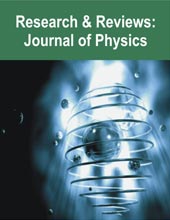Open Access

Kollati Nanda Sai Kumar,

J. Mahesh,

Roopsandeep Bammidi,
- UG Student Anil Neerukonda Institute of Technology and Sciences (A) Visakhapatnam, Andhra Pradesh India
- Assistant Professor Anil Neerukonda Institute of Technology and Sciences (A) Visakhapatnam, Andhra Pradesh India
- Assistant Professor Aditya Institute of Technology and Management (A) Srikakulam, Andhra Pradesh Indiavvvvv
Abstract
An innovative approach in the modeling and simulation of flow parameters of a triangular shape closed-loop wind tunnel was carried out using Computational Fluid Dynamics (CFD), which decreases the overall heat loss of the tunnel from the traditional closed loop wind tunnels and individual section simulations are done to predict and prove the decrease in losses occurred by them and the entire concept wind tunnel is simulated to see the uniformity of flow in the test section. The boundary conditions are appropriately selected based on a subsonic closed loop wind tunnel.
Keywords: CFD, guide vane radiator, wind tunnel, closed loop, simulation
References
1. Wittwer Adrian R, Moller Sergio V. Characteristics of the Low Speed Wind Tunnel of the UNNE. J Wind Eng Ind Aerodyn. 2000; 84(3): 307–320p.
2. Morimasa Watakabe, Masamiki Ohashi. Comparison of Wind Pressure Measurements on Tower-Like Structure Obtained from Full-Scale Observation, Wind Tunnel Test, and the CFD Technology. J Wind Eng Ind Aerodyn. 2002; 90(12–15): 1817–1829p.
3. Sahin B, Ward-Smith AJ. The Pressure Drop and Flow Characteristics of Wide Angle Screened Diffusers of Large Area Ratio. J Wind Eng Ind Aerodyn. 1995; 58(1–2): 33–50p.
4. Kevin Owen F, Owen Andrew K. Measurement and Assessment of Wind Tunnel Flow Quality. Prog Aerosp Sci. 2008; 44(5): 315–348p.
5. John Kaiser Calautit, Hassam Nasarullah Chaudhry. Comparison between Evaporative Cooling and a Heat Pipe Assisted Thermal Loop for a Commercial Wind Tower in Hot and Dry Climatic Conditions. Appl Energy. 2013; 101: 740–755p.
6. Peter Moonen, Bert Blocken. Indicators for the Evaluation of Wind Tunnel Test Section Flow Quality and Application to a Numerical Closed-Circuit Wind Tunnel. J Wind Eng Ind Aerodyn. 2007; 95: 1289–1314p.
7. John Kaiser Calautit, Hassam Nasarullah Chaudhry. A Validated Design Methodology for a Closed-Loop Subsonic Wind Tunnel. J Wind Eng Ind Aerodyn. 2014; 125: 180–194p.
8. Peter Moonen, Bert Blocken. Numerical Modeling of the Flow Conditions in a Closed-Circuit Low-Speed Wind Tunnel. J Wind Eng Ind Aerodyn. 2006; 94(10): 699–723p.

Research & Reviews : Journal of Physics
| Volume | |
| Received | November 20, 2020 |
| Accepted | November 21, 2020 |
| Published | January 21, 2023 |

